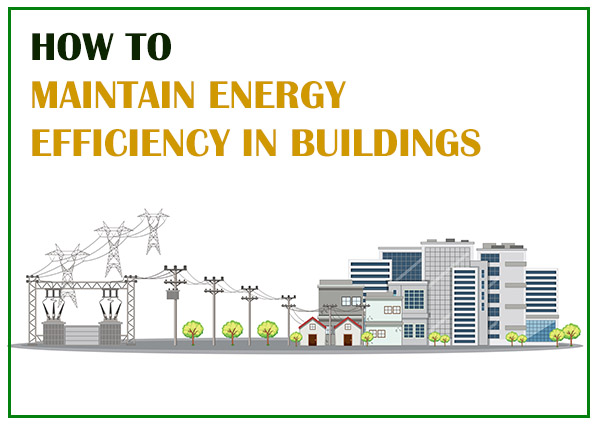How To Maintain Energy Efficiency In Buildings
In the following, we’ll be discussing a crucial topic that’s “How To Maintain Energy Efficiency In Buildings” and will discuss it thoroughly within the article. The energy efficiency of your building not solely affects your utility bill, but it can even have an effect on the value of your property as well as your workers’ performance. Here are some tips to consider as you improve the energy efficiency of your business building.
Measure Your Energy Consumption
Most businesses don’t have the luxury of building a brand new building or retrofitting from the ground up. However, whether you rent or own, you will be able to boost your energy efficiency as well as the 1st step is to measure your consumption.
Benchmarking may be a good way to begin seeing where you’ll be able to make the greatest improvements in energy efficiency. The Energy Star Portfolio Manager is actually a free web-based tool you can use to compare your buildings to the other commercial buildings in North America.
Focus On Insulation
The outside envelops or body of your building should be designed to lower heating as well as cooling needs. The insulation of your building ought to make it as airtight as possible. In the buildings that are newly constructed, this may be achieved by using high-performance insulation as well as non-traditional wall systems that actually provide additional insulation. Replacing doors and windows to avoid air leaks in existing buildings may be an excellent investment.
Choose The Right Ventilation System
As your building will be as airtight as you will possibly make it, you’ll want to use a ventilation system in order to maintain good air quality as well as prevent the buildup of moisture. Heat recovery ventilators are actually systems that use the outgoing air from your building to heat all of the incoming air. In the summer, the air that from your building can actually cool air coming from outside. 3s buildcon construction company in Gurgaon are doing great work.
Buy Certified Equipment
You need to keep your eye on the market for energy-efficient, high-performance systems as well as equipment. Energy Star certified products, for instance, will tend to be in the top 15 to 30% of their class for energy performance.
An Energy Star certified pc, for example, will use 30% to 65% less energy than a typical non-certified model, depending on its use. These merchandises evolve quite quickly, so it’s vital to stay informed about any sort of new developments.
Use LED Lights
Upgrading to LED lighting will assist you to reduce your energy use by seventy-fifth compared to incandescent lighting. You can even use sensors in spaces where it is not used frequently like conference rooms as well as restrooms to cut down on energy use.
Consider Upgrading To LEED
Several buildings in Canada are now being retrofitted or built to the green standard called Leadership in Energy and Environmental Design (Also referred to as LEED). It aims to enhance the property of buildings in such areas as website designing, water efficiency, energy use, materials selection, indoor air quality, and design features.LED buildings usually cost about two more to build than conventional buildings, however, improved energy and water efficiency and a higher occupancy rate imply that this additional cost is often recouped in just a few years.
Calculate Your Return On Investment
Despite any substantial up-front prices, energy efficiency investments are among the surest outlays you can make or build. Retrofitting a building, for example, can generate energy savings of 5 to 15% and typically pay for itself in less than three years, according to Natural Resources Canada.

